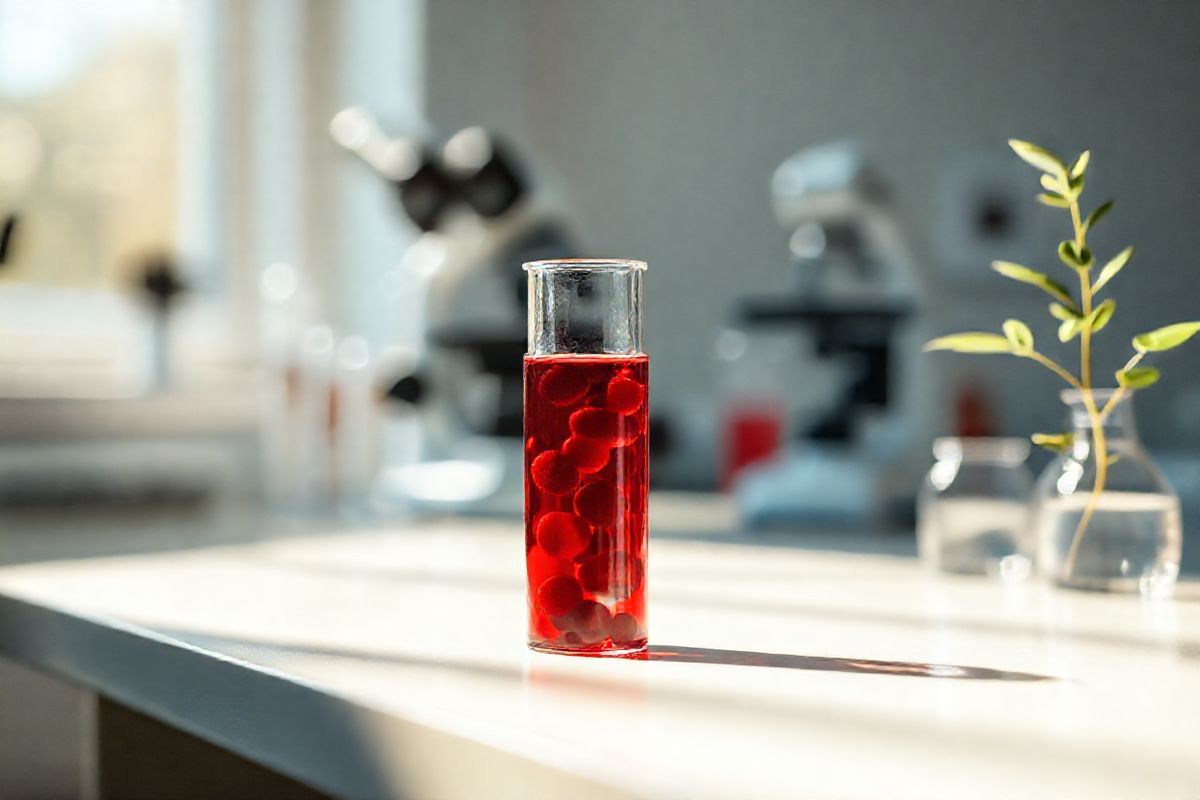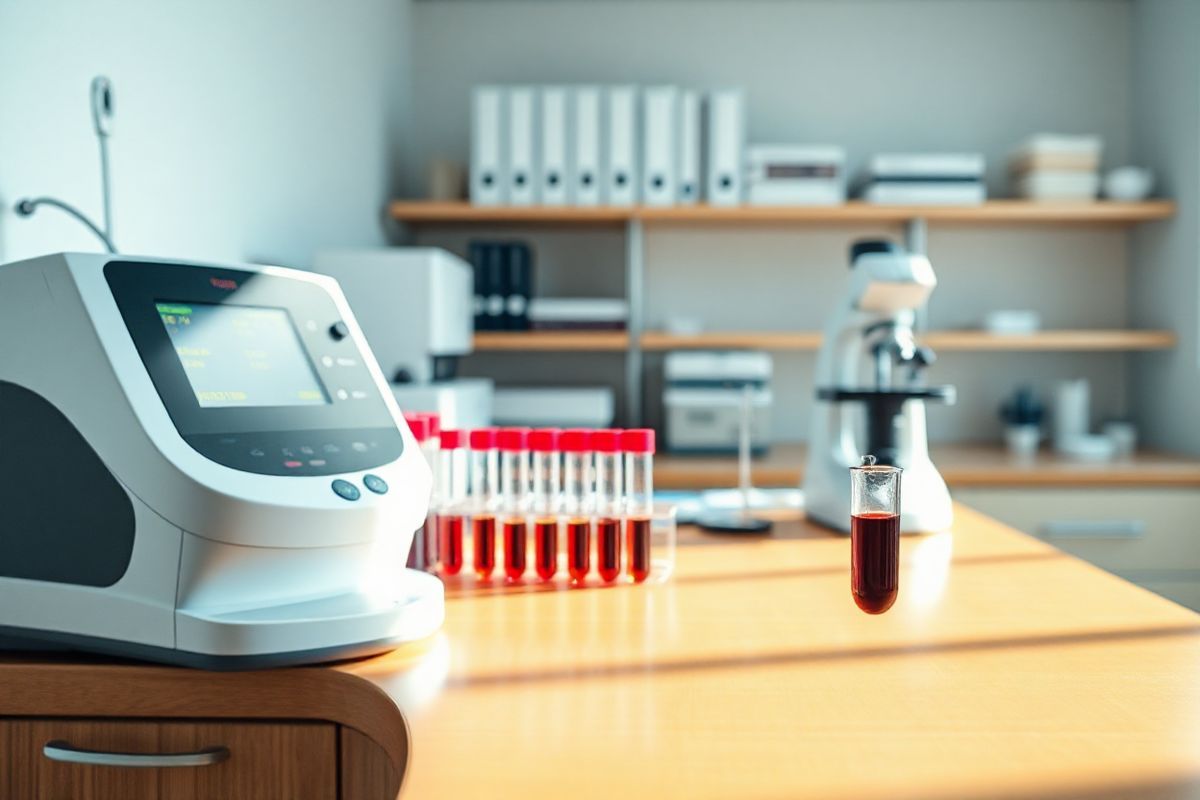Table of Contents
What is Warm Autoimmune Hemolytic Anemia? An Overview of the Condition

Warm autoimmune hemolytic anemia (WAIHA) is a form of anemia that arises when the immune system mistakenly targets and destroys red blood cells (RBCs) as if they were foreign invaders. This condition is classified as a type of autoimmune hemolytic anemia (AIHA) and can be classified further based on the temperature at which the antibodies react with the RBCs. In WAIHA, the antibodies involved are typically IgG type, which function effectively at the body’s normal temperature (approximately 37°C) (Cleveland Clinic, n.d.).
WAIHA constitutes 80-90% of AIHA cases, making it the most prevalent form. It can occur as a primary condition without any identifiable underlying disorder or as a secondary condition associated with other diseases such as lupus, lymphomas, or infections (Medical News Today, n.d.). The hallmark of autoimmune hemolytic anemia is the body’s immune system creating antibodies that mistakenly attack its own red blood cells, leading to reduced red blood cell counts and resulting in anemia.
Recognizing the Symptoms: How to Identify Warm Hemolytic Anemia
Recognizing the symptoms of WAIHA is crucial for timely diagnosis and treatment. Common symptoms include:
- Fatigue and Weakness: Due to a decrease in hemoglobin levels, patients often experience severe fatigue, leading to reduced physical stamina and energy.
- Paleness or Jaundice: The skin and eyes may take on a yellowish hue due to elevated bilirubin levels resulting from hemolysis.
- Shortness of Breath: anemia can lead to insufficient oxygen transport, causing feelings of breathlessness, especially during physical exertion.
- Rapid Heartbeat (Palpitations): The heart may work harder to compensate for the reduced oxygen-carrying capacity of the blood.
- Dizziness or Lightheadedness: These symptoms may occur due to lower blood pressure or insufficient blood flow to the brain (Cleveland Clinic, n.d.).
In severe cases, patients may also exhibit symptoms such as dark urine, indicating hemoglobinuria, and splenomegaly (enlargement of the spleen), which occurs as the spleen works overtime to remove the damaged cells from circulation (Medical News Today, n.d.).
Diagnostic Approaches: Tests and Procedures for Autoimmune Hemolytic Anemia

Diagnosing WAIHA involves a combination of clinical evaluation and laboratory tests aimed at confirming the presence of hemolysis and identifying the underlying causes. Key diagnostic tests include:
- Complete Blood Count (CBC): This test measures various components of blood, including hemoglobin levels and hematocrit (the proportion of blood volume occupied by RBCs). Low levels of hemoglobin and hematocrit are indicative of anemia.
- Coombs Test: This blood test identifies the presence of antibodies attached to red blood cells. A positive direct Coombs test confirms autoimmune hemolytic anemia by indicating that the immune system is attacking its own RBCs (Cleveland Clinic, n.d.).
- Reticulocyte Count: This evaluates the bone marrow’s response to anemia by measuring the number of young red blood cells in the blood. A high reticulocyte count suggests the body is attempting to compensate for the loss of RBCs due to hemolysis.
- Bilirubin Test: Because hemolysis leads to increased breakdown of hemoglobin, elevated levels of bilirubin (particularly indirect bilirubin) may be observed in the blood, indicating liver overload (Cleveland Clinic, n.d.).
- Haptoglobin Test: Haptoglobin binds free hemoglobin released into the bloodstream. Low levels of haptoglobin can indicate hemolysis, as it is consumed in the process.
These tests help clinicians confirm a diagnosis of WAIHA and rule out other possible causes of anemia, such as nutritional deficiencies or chronic diseases.
Treatment Options: Effective Strategies for Managing Warm Hemolytic Anemia
Management of WAIHA largely depends on the severity of symptoms and the underlying causes. The primary goal of treatment is to increase red blood cell count and alleviate symptoms associated with anemia. Treatment modalities include:
-
Corticosteroids: Medications such as prednisone are often the first line of treatment for WAIHA. They work by suppressing the immune response that is causing the RBC destruction. Most patients respond well to corticosteroid therapy, leading to an increase in RBC counts (Cleveland Clinic, n.d.).
-
Immunosuppressive Agents: If corticosteroids are ineffective, additional immunosuppressive drugs such as azathioprine or cyclophosphamide may be prescribed to further reduce the immune system’s activity (Cleveland Clinic, n.d.).
-
Splenectomy: Surgical removal of the spleen may be necessary in cases where patients do not respond adequately to medical treatment. The spleen plays a significant role in filtering and destroying damaged or abnormal red blood cells; thus, its removal can help preserve RBCs in circulation (Medical News Today, n.d.).
-
Blood Transfusions: In severe cases of anemia where immediate correction of hemoglobin levels is required, blood transfusions may be administered to provide a rapid increase in red blood cell counts.
-
Treatment of Underlying Conditions: If WAIHA is secondary to another condition, such as lupus or lymphoma, addressing the primary condition is essential to managing the hemolytic anemia effectively (Cleveland Clinic, n.d.).
Living with Warm Hemolytic Anemia: Tips for Patients and Caregivers
Living with WAIHA can be challenging, but there are several strategies that patients and caregivers can employ to manage the condition effectively:
- Regular Monitoring: Patients should have regular follow-ups and blood tests to monitor hemoglobin levels and adjust treatment as needed. Close monitoring helps prevent complications associated with severe anemia.
- Healthy Diet: A balanced diet rich in iron, vitamin B12, and folate can support red blood cell production. Foods such as leafy greens, lean meats, and fortified cereals are beneficial.
- Avoiding Infections: Patients with weakened immune systems may be more susceptible to infections. Practicing good hygiene and avoiding exposure to sick individuals can help reduce this risk.
- Educating Caregivers: Caregivers should be educated about the symptoms of WAIHA and the importance of adhering to treatment plans to help manage the condition effectively.
- Support Groups: Connecting with others who have similar experiences can provide emotional support and practical advice for living with WAIHA.
FAQ
What causes warm autoimmune hemolytic anemia?
WAIHA can be caused by various factors, including autoimmune diseases (e.g., lupus, rheumatoid arthritis), certain infections, or exposure to drugs that trigger antibody production. In some cases, the cause remains unknown (Cleveland Clinic, n.d.).
How is warm autoimmune hemolytic anemia diagnosed?
Diagnosis typically involves blood tests, including a complete blood count (CBC), Coombs test, reticulocyte count, bilirubin levels, and haptoglobin levels, to confirm hemolysis and assess the severity of anemia (Cleveland Clinic, n.d.).
What treatments are available for warm autoimmune hemolytic anemia?
Treatment may include corticosteroids, immunosuppressive medications, splenectomy, and blood transfusions, depending on the severity of the condition and the underlying causes (Cleveland Clinic, n.d.).
Can warm autoimmune hemolytic anemia be cured?
While WAIHA can often be managed effectively with treatment, whether it can be cured depends on the underlying cause. In some cases, the condition may resolve with appropriate therapy (Cleveland Clinic, n.d.).
References
- Cleveland Clinic. (n.d.). Autoimmune Hemolytic Anemia: Treatment, Symptoms & Types. Retrieved from https://my.clevelandclinic.org/health/diseases/22349-autoimmune-hemolytic-anemia
- Medical News Today. (n.d.). Autoimmune hemolytic anemia: Causes, types, and symptoms. Retrieved from https://www.medicalnewstoday.com/articles/312508
- National Institutes of Health. (n.d.). Autoimmune hemolytic anemia. Retrieved from https://rarediseases.info.nih.gov/diseases/5870/autoimmune-hemolytic-anemia











